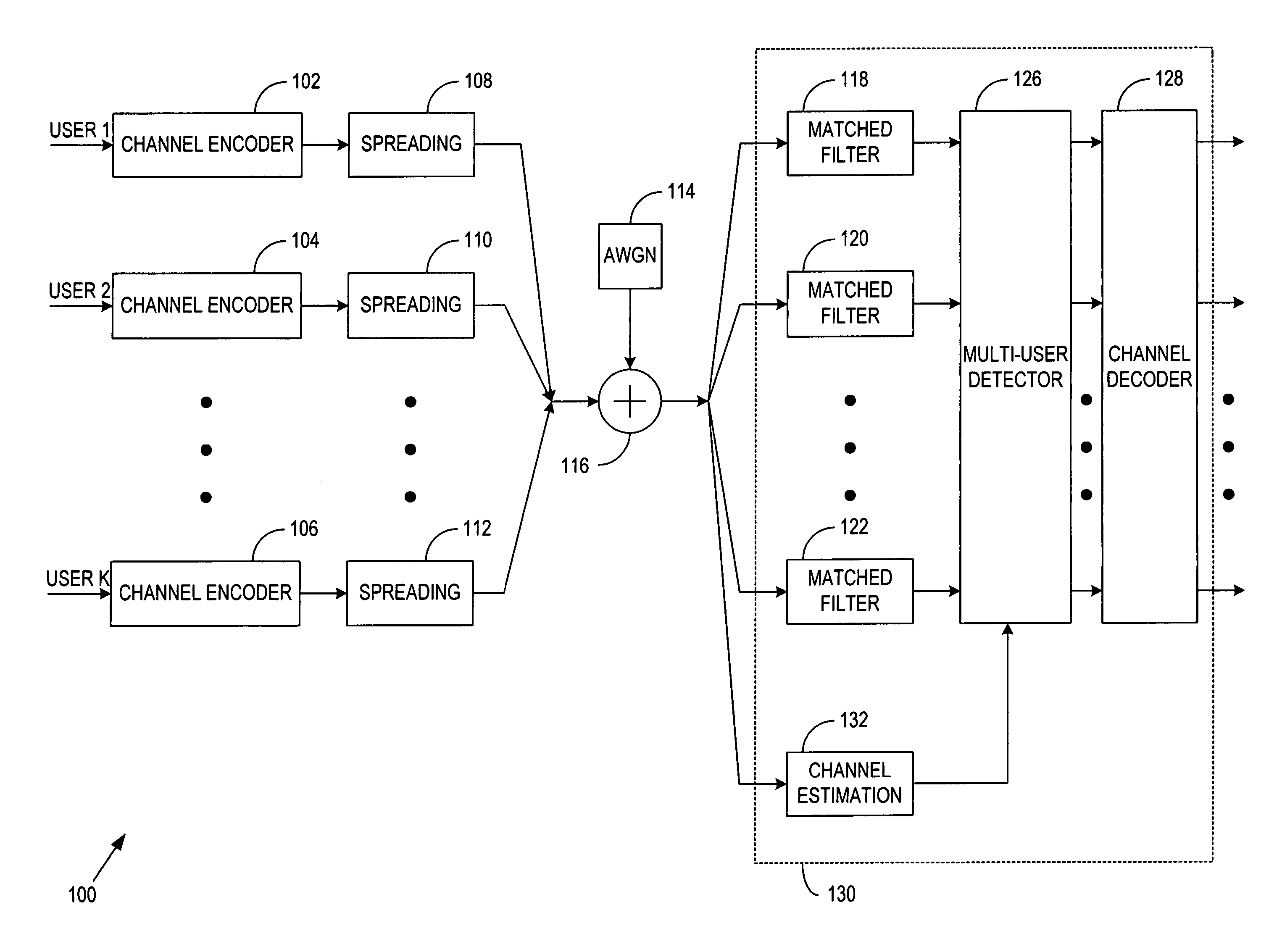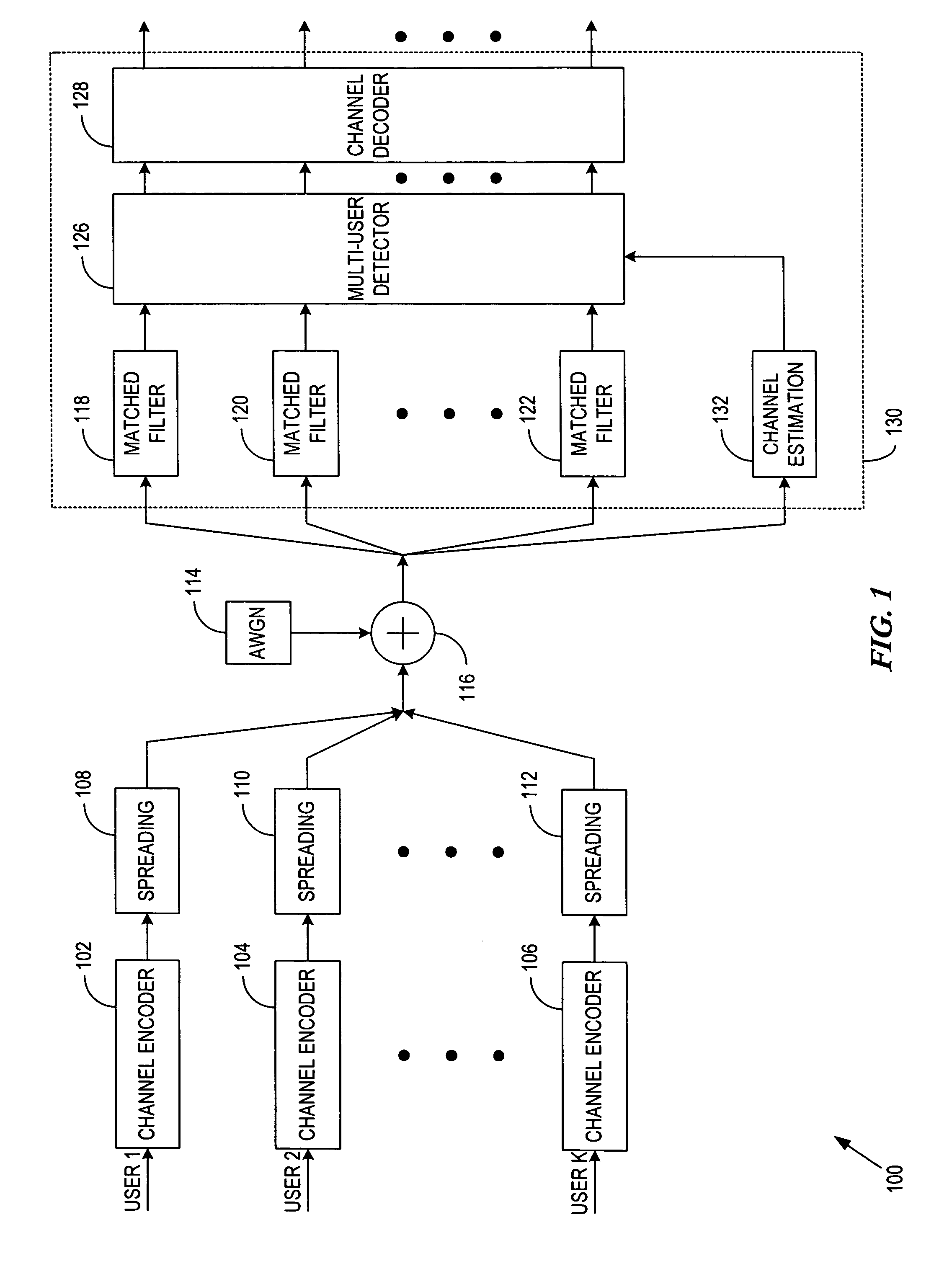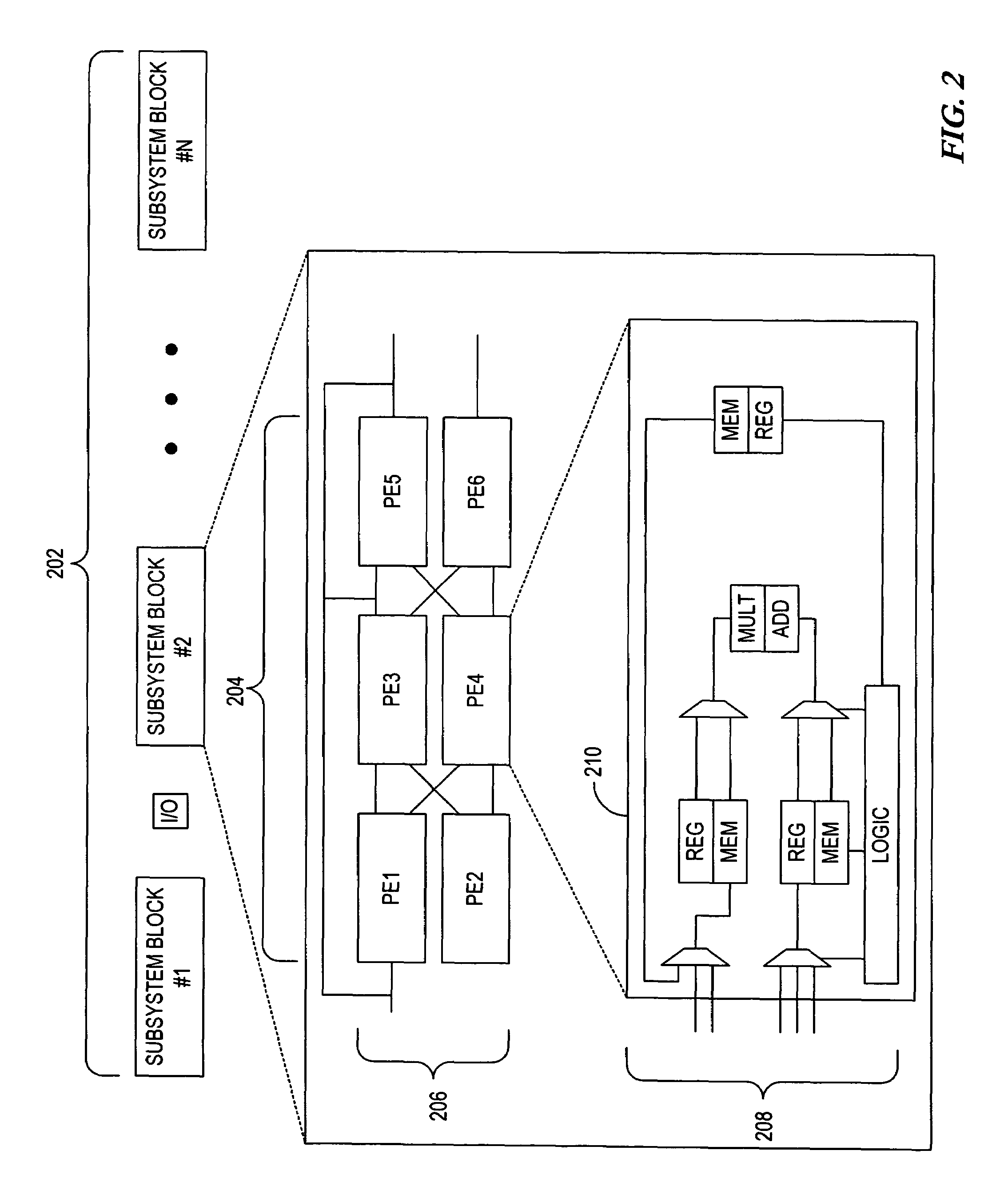System, apparatus, and method for adaptive weighted interference cancellation using parallel residue compensation
a technology of parallel residue compensation and interference suppression, applied in the field of multi-access communication systems, can solve the problems of increasing poor performance of matched filters, co-channel interference, or cross-correlation from other codes, and bounded by an upper limit the number of users that are serviceable in a given cell, so as to improve the accuracy of mai estimation and enhance the suppression of mai. the effect of suppression
- Summary
- Abstract
- Description
- Claims
- Application Information
AI Technical Summary
Benefits of technology
Problems solved by technology
Method used
Image
Examples
Embodiment Construction
[0032]A portion of the disclosure of this patent document contains material which is subject to copyright protection. The copyright owner has no objection to the facsimile reproduction by anyone of the patent document or the patent disclosure, as it appears in the Patent and Trademark Office patent file or records, but otherwise reserves all copyright rights whatsoever.
[0033]In the following description of various exemplary embodiments, reference is made to the accompanying drawings which form a part hereof, and in which is shown by way of illustration various embodiments in which the invention may be practiced. It is to be understood that other embodiments may be utilized, as structural and operational changes may be made without departing from the scope of the present invention.
[0034]Generally, the present invention provides a novel, multi-stage Parallel Residue Compensation (PRC) receiver architecture for enhanced suppression of the Multiple Access Interference (MAI) in Code Divi...
PUM
 Login to View More
Login to View More Abstract
Description
Claims
Application Information
 Login to View More
Login to View More - R&D
- Intellectual Property
- Life Sciences
- Materials
- Tech Scout
- Unparalleled Data Quality
- Higher Quality Content
- 60% Fewer Hallucinations
Browse by: Latest US Patents, China's latest patents, Technical Efficacy Thesaurus, Application Domain, Technology Topic, Popular Technical Reports.
© 2025 PatSnap. All rights reserved.Legal|Privacy policy|Modern Slavery Act Transparency Statement|Sitemap|About US| Contact US: help@patsnap.com



